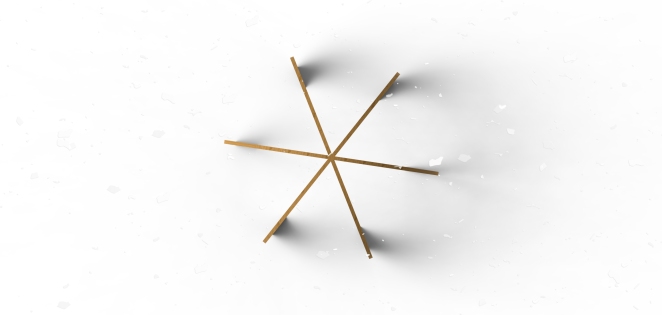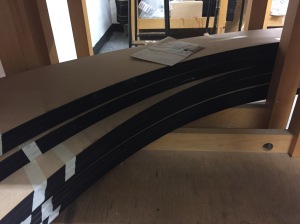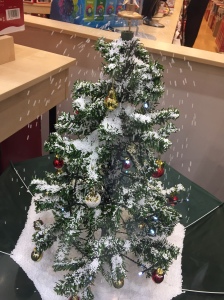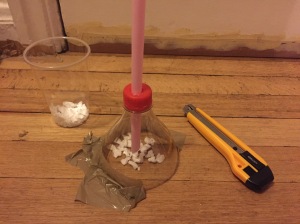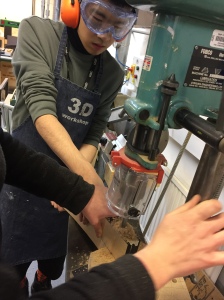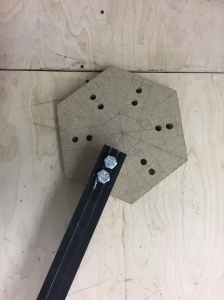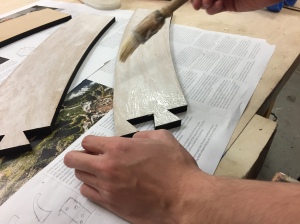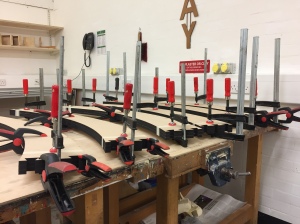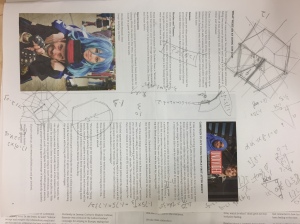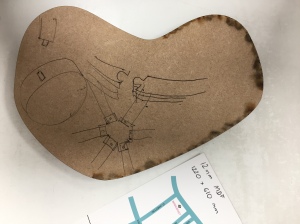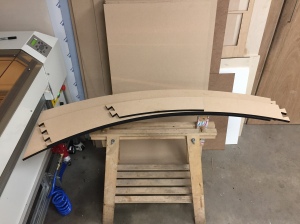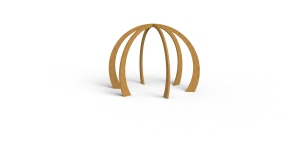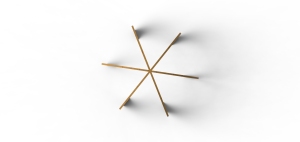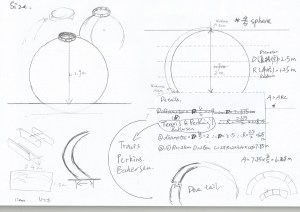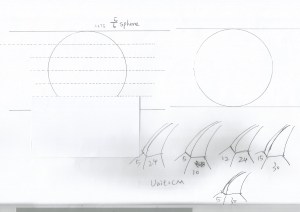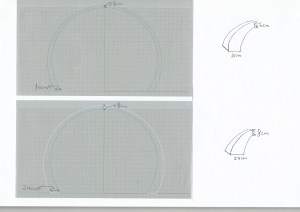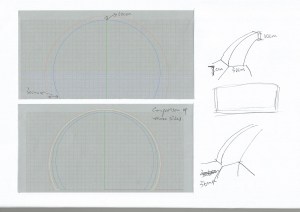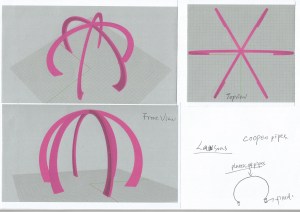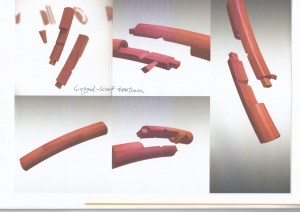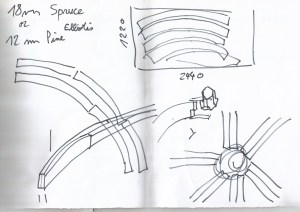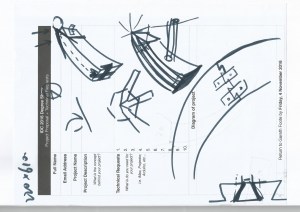Month: November 2016
FMP’s Conclusion
Through the thesis, the basic philosophical understanding of the notion of the sublime from Longinus, Burke and Kant has been explored, which belongs to an aesthetics catalogue with different aspects. Sublime is a part of aesthetics, and it is hard to define and not that easy to describe and represent. Also, sublime has various forms like awe, terror and even in today’s technology. To some degree, sublime exists in everywhere, however, it is not something that we can easily create and grasp. From the study, the key to discovering the sublime is one’s way of looking at beauty and his or her personal experience. Human being is an individual and with its awareness of things, but we are all interested in curiosities and those seemingly magical things because there is a generality of unknown and un-representable. Therefore, the most likely way to transmit the impossible matter is to restore the impossibility as much as possible in an approachable and straightforward way that makes people feel like seeing the light.
Meanwhile, the study of formalism and its relationship with artwork’s content, which makes me have a better understating of how to structure an artwork. In addition, form is also related to aesthetics. Thus, sublime exists in aesthetics and then aesthetics reflects formalism, and they are closely connected. The “interface” of an artwork is the function of revealing immanent eternity which with the reality inside. And naturally, the meaning of the concept is sublimated.
From the point of interaction design, it is an intuitive method to explore potential concept of the work through aesthetic form and interactivity. Most importantly, sublime is able to evoke the feeling of pleasure and pain at the same time during the engagement in artworks by using human ability of senses and reasons. Through the analysis of three artworks, they have totally different forms but with a universal nature – ambivalent experience (contradictory is the origin of the sublime) and individual’s involvement. These three projects avoid self-directed definition but use simplification, so the sublime is evocated in people’s participation. The quality of nature what they made via ordinary objects is “grand”.
With the understanding of the sublime through the study and the form, I chose in In the Name of Sublime: A So-called Dome and A Sudden Snow. What I focused on is the journey of how to approach the impossibility of the sublime by using ordinary objects and approachable methods, and also the “immersive” relationship (experience) between participants, space and snow. As a souvenir, miniature crystal ball is for recalling the memory of what you have been through and is the representation of one particular festival – Christmas. Actually, the power of recalling is un- representable, each piece of memory brings you various feelings: happy and unhappy, relaxed and tense, sweet and sad, etc., which is also unpredictable because no one knows the effect of recalling in different situations. To amplify the size of miniature crystal ball to enable one-person to stand inside and feel snowing is romantic, but it is tough to build the ball and create the snow which is just like the characteristic of sublime. Therefore, to approach this seemingly impossible thing via an ordinary way is exploring the ubiquity of the sublime, which is meaningful and interesting. Also, the notion of the sublime should be straightforward rather than puzzling.
Test of Snow Making
Now, the dome and the cover is amost done. The next problem need to be solved is the snow.
How to make snow effect? For my ideal concept is trying to make polystrene bead hovers in air by using the gaseous exchange. Thus, the snow effect can rotate circularly.
Here is an reference (En Plein Vol By Antoine Terrieux & Camille Vacher): a paper plane is rotaing over six hairdriers by using Bernoulli’s principle (Within a horizontal flow of fluid, points of higher fluid speed will have less pressure than points of slower fluid speed (Khan Academy, n.d).
Overall, this project looks so cool and might with high-tech things, but actually the fact is just about basic physical principle. How to transfer a normal phenomena to a so-called spectacular is much powerful than other high-tech thing. Sometime, people are ignoring the ability of discovering the natural power from the nature world.
The first test: Therefore, I tried to use the same principle to make snow rotate, but it is failed. Maybe because there is no enough hairdriers that can make a circul to cause the circular wind. But, the fake snow was hovering in air for a few seconds. Here is the picture of the test:
The second test: This test is inspired by a snowing Christmas tree what I found in a toy’s store in Westfield. Please see the picture below:
After that, I searched for the principle of the tree online, and luckly there is a DIY course on YouTube! Here is the link:
That is interesting, is it? Personally, it is a magic. And I also tried to imitate the process: the top of coke plastic bottle, a straw, some polystrene bead and a hairdrier. Please see the picture below:
Yayyyy, actually this test was working, but the prototype is too small to see the effect.
Here is a question: how to make the face snow rotating like the course in YouTube video? Because the dome is very huge and people will go inside, how to design the container for the fake snow and not split it out from the container?
The worst option: BUY A SNOW MAKER MACHINE!!!!!!
*Image of the project En Plein Vol: http://www.hanshinnews.com/news/articleView.html?idxno=12129
The Process of Building the Dome II
The connecting method of the top part is more complicated than expected because there is a principle of design (how to make the dome demountable and flexible). Dove tail is easyly fix two pieces of wood together and the stucture of that is beautiful than screwing. The part of the time should be strong anf stable enough, I decided to dirll the hole on each smll piece, and then to use bolts for conneting. please the pictures vloew
The Process of Gluing and Cutting
To make dome as stable as possible, there are three layers for each arch (3.6mm thickness). As a result, I need to glue them together whichi is a very huge workload! I took three three days in total on gluing.
Because laser cut cannot do curve cutting, I need to cut it by myself for the top part of the dome so that the top part can be fixed. Natalie suggested me that to cut a hexagon shape and put each arch on it averagely, then using bolts to fix them.
Why Snow?
1. The initial idea of reproducing snow is because there is less snowing in London in winter. And also, to set up the dome and snowing in different public areas around London is also my ideal concept, so people can get in and experience the snow and to make a comparison with the background (the surrounding around the dome). However, this is not practical.
2. Snow effect is aslo a key element in crystall balls (sparkling slices).
3. Snow is the representation of romanticsim, especially in Christmas. And some people would say, “is that even a Christmas without snowing?”
4. Snowing also represents climate change.
5. The initial shape of snowflake is a perfect hexagonal prism, and the final form of the crystal will always have 6-fold symmetry because of the hexagonal way water molecules crystallise (Zentile, 2007, http://www.thenakedscientists.com/HTML/articles/article/science-of-snowflakes/). This is my first time to know shape chaning of snowflakes, which is incredible. How can snowflake keep 6-fold symmetry all the time from the beginning to ending?
Wood Cutting (Lasercutworkshops)
After emailed to different workshops who are able to do wood cutting in London, there is a studio called Lasercutworks accepted my request. Laser cut would be the quickest way for large-scale wood cutting. I also asked London Art Workshop, the guy also suggested me to do cutting via CNC Rounding due to that I need to joggle.
I went to lasercutworks for enquiring how to do timber cutting and the problem of joggle method. What they said is to do dove tail between each small piece, and cut an angle to fit in or use hexagon wood board to hold the top part of the dome. Please see the pic below:
The specilist is very nice there and helpful. And there is a student discount for students for lasercut! 50P / min which is the same in uni I think.
Here is the processing of lasercut:
And here is the phot with them! (Jared).
3D Renderings of the Dome
Thanks for the helps from Yadi Yang and Zhilin Zhang on 3D Modeling and 3D renderings.
Here are the pictures of the Dome, which are quiet like the icon of 2016 LCC PGshow. A coincidence?
And I also designed a logo for my project, which looks like a piece of snow. Somehow, the elements (PGshow’s icons and the topview of dome) implies that there is a sudden snow in campus? Anyway, let’s see on the exhibition.
The Final Structure of the Dome
Firstly, thanks for the helps from Yadi Yang, Trade Point, Lasercutworks, 3D workshop in LCC, Jewson and London Art Workshop, they helped me a lot on the structure thing and material thing.
With the help from Yadi, here is sketche and 3D draft of the dome:
And here is the connection method of the top of the dome and between two slices (dove tail):
